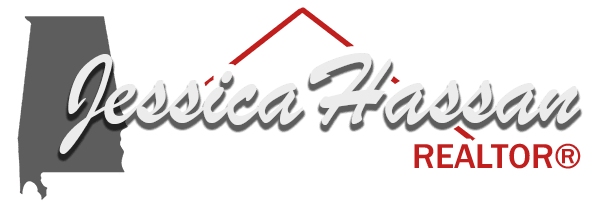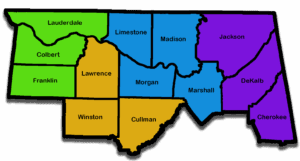Guide to Northern Alabama: Regional, Municipal, and Land Use Overview
Introduction
Northern Alabama is a diverse region encompassing a mix of urban centers, rural communities, and unincorporated areas. Understanding the distinctions between cities, towns, neighborhoods, subdivisions, and land descriptions is essential for new residents navigating property ownership, zoning regulations, and community services.
By the Numbers: Regional, Municipal, and Land Use Summary
- Population Growth: Madison County is home to over 412,000 people, with Huntsville surpassing 225,000 residents and ranking as Alabama’s most populous city (2023).
- ️ Land Area: Madison County spans 801.6 sq mi, with Huntsville itself covering over 223 sq mi and a density of ~1,036 residents per sq mi.
- ️ Municipal Breakdown: Alabama has 463 incorporated municipalities, including 167 cities and 296 towns; unincorporated areas remain under county governance.
- ️ Subdivisions & Neighborhoods: Huntsville alone features over 100 neighborhoods; Madison and Limestone counties contain a mix of platted subdivisions and rural “metes and bounds” parcels.
- Land Use Patterns: Northern Alabama mixes planned developments with legacy metes-and-bounds properties, particularly in rural areas like Gurley and Hazel Green.
- ️ Unincorporated Communities: Notable unincorporated areas like Big Cove and Hazel Green rely on county services but often maintain distinct local identity.
- ️ Geographic Features: The Tennessee River and Highland Rim shape land development and zoning constraints across Northern Alabama’s counties.
- Income Snapshot: Median household income ranges from ~$42,000 (rural counties) to $70,000+ in more urban areas like Huntsville and Madison.
️Regional Overview
Northern Alabama comprises several counties, each with its unique characteristics:

- Madison County: Home to Huntsville, a hub for aerospace and technology industries.
- Limestone County: Features a blend of suburban and rural areas, including the city of Athens.
- Morgan County: Includes Decatur, known for its manufacturing and riverfront amenities.
- Lauderdale County: Contains Florence, part of the Shoals area with rich musical heritage.
- Colbert County: Houses Muscle Shoals, renowned for its recording studios and cultural significance.
️Municipalities vs. Unincorporated Areas
Municipalities
Incorporated cities and towns in Alabama have formal governmental structures, including elected officials and the authority to enact ordinances. They provide services such as police, fire protection, zoning, and public utilities.
Examples:
- Huntsville (Madison County): A rapidly growing city with a strong economy.
- Athens (Limestone County): Offers a mix of historic charm and modern amenities.
- Florence (Lauderdale County): Known for its cultural events and educational institutions.
Unincorporated Areas
Unincorporated communities lack a municipal government and rely on county services. They do not have formal boundaries or elected municipal officials but may have distinct identities and local landmarks.
Examples:
- Hazel Green (Madison County): A community with residential developments and agricultural areas.
- Big Cove (Madison County): Features a mix of rural landscapes and suburban growth.
Note: Unincorporated areas may still have homeowner associations (HOAs) or community organizations that manage certain aspects of local life.
️Neighborhoods, Subdivisions, and Districts
Neighborhoods and subdivisions in Northern Alabama vary widely in terms of planning, amenities, and governance.
Planned Communities
These are developments with specific layouts, amenities, and often HOAs that manage communal spaces and enforce covenants.
Example:
- Hampton Cove (Huntsville): A master-planned community featuring golf courses, lakes, and walking trails. It comprises 21 neighborhoods with diverse housing options and is adjacent to natural preserves.
Metes and Bounds Properties
Some properties are described using the “metes and bounds” system, which outlines land boundaries using physical features and measurements. These properties may not be part of a formal subdivision and can vary significantly in size and shape.
Examples:
- Athens Area: Properties range from small residential lots to expansive rural tracts, with varying degrees of development and infrastructure.
- Gurley Area: Offers larger parcels of land, often with custom homes and agricultural uses.
Understanding the type of property description is crucial for matters related to zoning, utilities, and property taxes.
Land Descriptions: Metes and Bounds
The “metes and bounds” system is a method of describing land by detailing its boundaries through distances and angles, often referencing natural landmarks or man-made structures.
Key Points:
- Common in rural areas and older property records.
- Requires precise surveying to establish legal boundaries.
- May impact the process of buying, selling, or developing land.

Legal Framework and Regulations
Understanding the legal context is essential for property ownership and development in Alabama.
Subdivision Regulations
Municipalities have specific regulations governing the division of land into subdivisions, ensuring proper infrastructure and adherence to zoning laws.
Reference:
- City of Decatur Subdivision Regulations: Outlines procedures for plat approval, infrastructure requirements, and developer obligations.
Zoning Ordinances
Zoning laws dictate land use, building codes, and development standards within municipalities.
Reference:
- City of Arab Zoning Ordinance: Details zoning districts, permitted uses, and development guidelines.
Annexation Laws
Annexation refers to the process by which municipalities expand their boundaries to include adjacent unincorporated areas.
Key Methods:
- Local Act of the State Legislature: Requires legislative approval.
- Referendum: Involves a vote by residents of the area to be annexed.
- Petition by Property Owners: All property owners in the area request annexation.
Understanding annexation is important for residents in unincorporated areas considering incorporation into nearby cities or towns.
Conclusion
Navigating the complexities of Northern Alabama’s regional divisions, municipalities, and land descriptions is vital for new residents. Awareness of the distinctions between incorporated and unincorporated areas, the nature of neighborhoods and subdivisions, and the legal frameworks governing land use will facilitate informed decision-making and community integration.
Additional Resources
- Alabama Department of Revenue: Legal Descriptions & the Law
- City of Decatur Subdivision Regulations
- City of Arab Zoning Ordinance
- Annexation Manual – Alabama League of Municipalities
- Alabama – Places to go Interactive Map
This guide is a living document and will be updated regularly to reflect changes in the community. For the most current information, please refer to the provided resources.
#land #county #areas #alabama #unincorporated #unincorporatedareas #madisoncounty
Sharing is caring:


